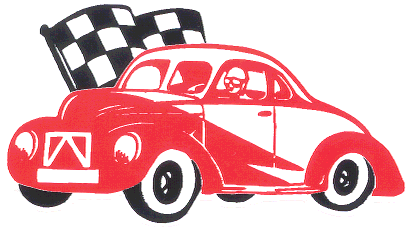
AN OLD TRACK IN MORRISTOWN

Little is known about this particular early experiment in the promotion of stock car racing in Vermont. Charlie Smith, a Morrisville native and a member of my Catamount Stadium Distinguished Graduates list. Here is the article someone wrote, as forwarded to me by Charlie:
In
the 1940s, stock auto racing was beginning to see an explosion in various parts
of the country. In Florida, a man named Bill France was organizing what would
become NASCAR (National Association of Stock Car Racing). Open wheel racers had
already made Indianapolis famous, but by the '40, folks were realizing they
could race whatever car they had, where ever they were
located.
The roots of stock car racing are often traced back to the moonshine
days of the South. Guys like Junior
Johnson first learned to drive fast and trick up there cars, out-running the law
as they carried their homemade corn squeezin's to yet another late night clandestine
rendezvous.
Times changes as prohibition became a
distant memory and white lightning became harder to find. People began organizing "races" for these
guys. While the South gets all the credit,
the same thing was happening all around the country, even
in New England, even in Vermont, and even in Morristown. Lamoille County's affection for auto racing
didn't begin when Thunder Road in Barre opened its doors. By 1950, Morristown
was home to its own homegrown, rudimentary racetrack.
On Sunday afternoons, the fields roughly
where the Bishop John A. Marshall school now sits were abuzz with the sound of revving motors and the
cheers (and often jeers) of large crowds of spectators. Clarence
"C. C." Miller owned the property and fashioned the track for racing
enthusiasts from around north central Vermont. Howard Conley, of Barton promoted
the events.
Long before the glitz and glamour of CBS and the
Daytona 500, Ken Squier could be found on the back of a flatbed truck, calling the action at Morristown's
racetrack. At only 14 or 15 years old, he most likely was one of the
youngest announcers working the racing circuit. Squier remembers his days in that field well. Although when asked how a
14 year old boy could get a job as the track announcer, he couldn't quite
remember. "It was probably
because they didn't have one," said the owner of WDEV AM/FM and WLVB.
The layout was fairly simple as Squier recalls. A
bulldozer stripped a circle of grass to create the oval. Turns three and four sat near the Laporte Road, turns
one and two were down by the trees along Ryder Brook. The pit area was between
the first and second turns and the trees.
There were no grandstands for the many spectators who would turn out each
week (about 300-400), but a chicken wire fence "protected" the fans from
the cars. Racing
back then was not very organized. That is, the rules were flexible. Races would
start about noon and run until dark. The drivers would draw for starting
positions. The race
cars being driven were archaic compared to today's high-tech machines.
"They
were not stock cars like we know it," said Squier, the cars on the Morristown oval
were a lot like the cars the spectators drove to the event.
The
cars had little or no roll bars, in fact quite often, he said, they didn't even
have brakes
or
floorboards. The original racers on the track came down
from the Northeast Kingdom. At the time, There was an existing track in Lyndonville, and one at the Newport
Ballpark. "Two or three of the
drivers were from the Barton area," recalls Squier.
The northern cars were big and heavy.
There were other
tracks in the area as well, Sheldon Springs, Colchester, South
Burlington,
and Malletts Bay. Northfield had a fairly large track; Dog River was its
name.
After a few
races had been run in Morristown, cars started arriving from the Chittenden
County area, too. Squier said these cars were smaller and lighter, and began
beating the Newport regulars. Trouble was brewing.
Over time, a small civil war began to develop, as the Chittenden County
faction began feuding
with the Northeast Kingdom faction.
The feud
escalated to the point where the Kingdom drivers brought in a "ringer"
to help gain an advantage over the Chittenden County hotshoes. Albert
"Killer" Kincaid came down
in his car dubbed the "Lucky Old Son.".
In a story that sounds like something out of a
B-movie, Kincaid came to town with the reputation of being a hit man who had
raced the tracks of foreign lands (well, Quebec to
be
precise).
Kincaid
showed up one week and promptly began putting out the Burlington cars. Squier
recollects he rolled about four cars, including that driven by the popular Ronny
"Rollover" Farnsworth. Alton Hedges took to the track with a very nice
looking car that week,
and he was the last to be done in by the Killer.
Squier said as the race drew to a close, Kincaid realized he was not
going to be well received in the pits, so he parking on the track near the
flatbed used by Squier and the track
officials.
He said Hedges came after Kincaid as he still sat in
the car. Reaching into the car, Hedges
began beating on Kincaid. Soon an all-out riot had started with most of the 400
or
so people in attendance fighting.
Squier and the track officials sought refuge under the flatbed and watched
the donnybrook.
The National Guard had to called out to put
a stop to the fights.
One of Squier's most vivid memories of the melee was of an older
gentleman with a crutch.
He just swung at away at anyone who came close to him!
This incident
served as the beginning of the end for Morrisville's little racetrack. Squier
said
he believes they finished out the season, be he thinks that was the final year
of auto racing in
Lamoille County.
A
cursory search for information about the racetrack met with many dead ends. News
& Citizen's
dating from 1949 to 1951 contained no mention of the track or this brawl. But
this
article did turn up several photos from a woman in Johnson who remembered
attending
the track as a child and snapped shots with her Brownie.
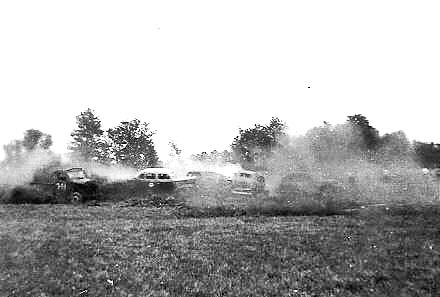 All Photos Courtesy of Charlie Smith There is a scrum in one turn and you can barely make out one car, to the far right, heading off the track. |
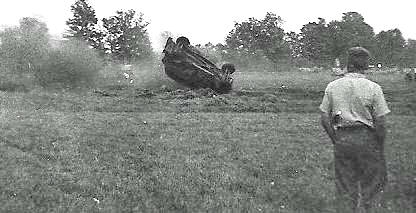 The car digs in the birm and starts to roll off the turn. |
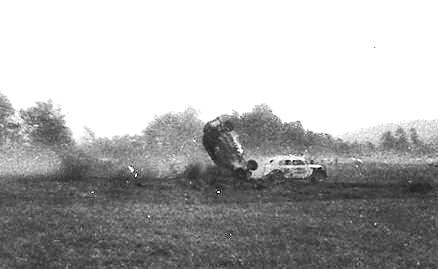 The car almost catches up to - and lands on top of - some of the field going by. |
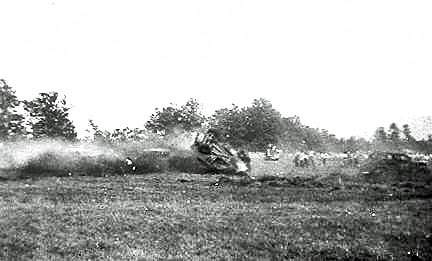 |
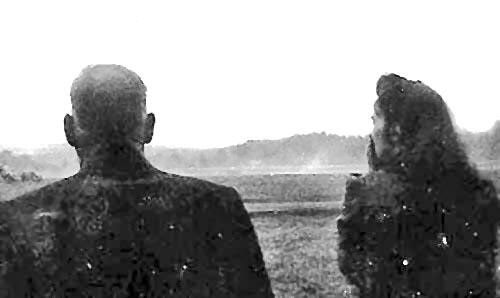 A woman puts her hand to her mouth in horror as the car continues to roll over. |
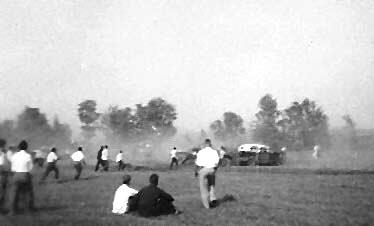 To show how lax safety conditions were, both crew members and people from the crowd rush over to the car as it comes to rest.. |
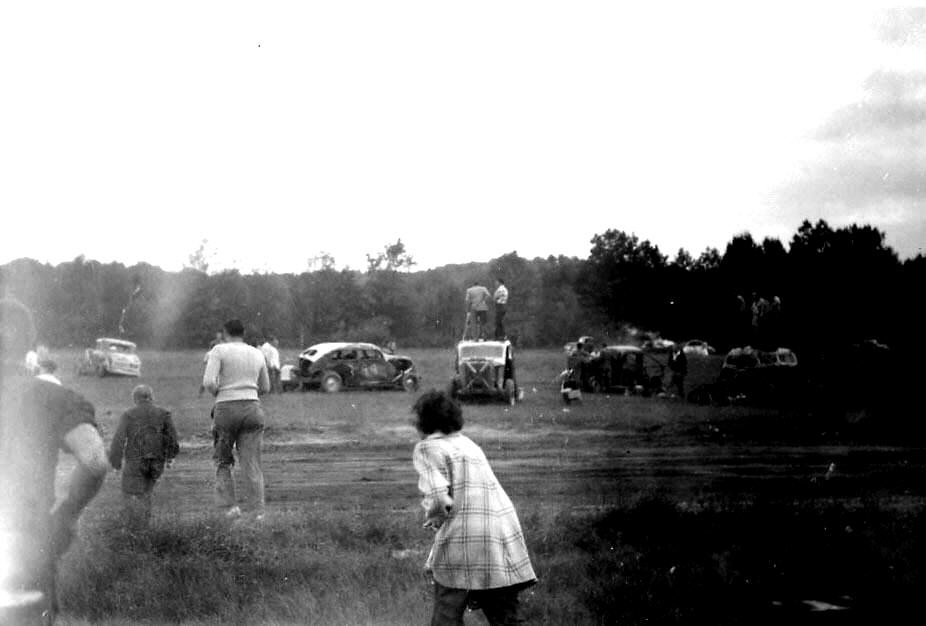 Alan & Andy Ward This appears to be the same track. Same kind of scene. An accident, with spectators streaming onto the track. |
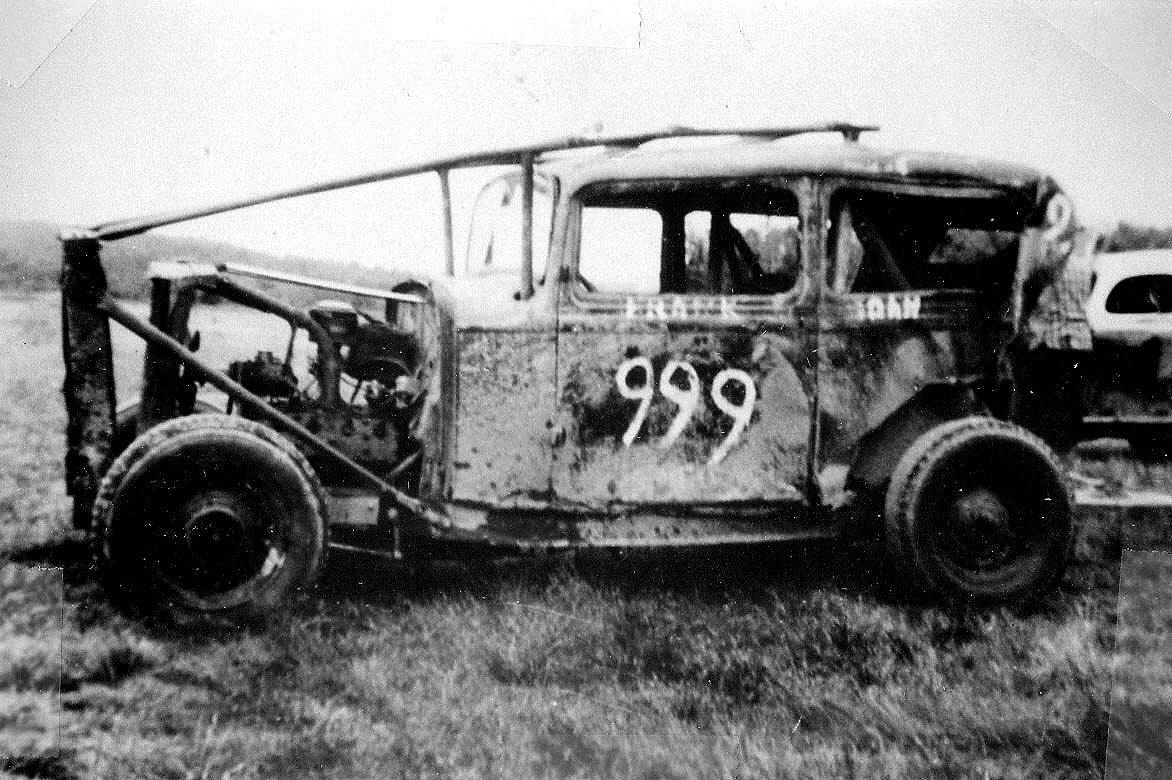 Courtesy of Ken Paulsen This triumph of race car engineering was recent Hall-of_Famer, Johnny Gammell's first car. It probably ran right here at Morrisville. |
|
Courtesy of Bill Baker The #5 of reknowned driver Harold "Cannonball" Baker leads at Enosburgh Speedway. Being so close by, it is likely that many of the same cars raced at both tracks. |
Courtesy of Bill Baker More action at Enosburgh Speedway. |
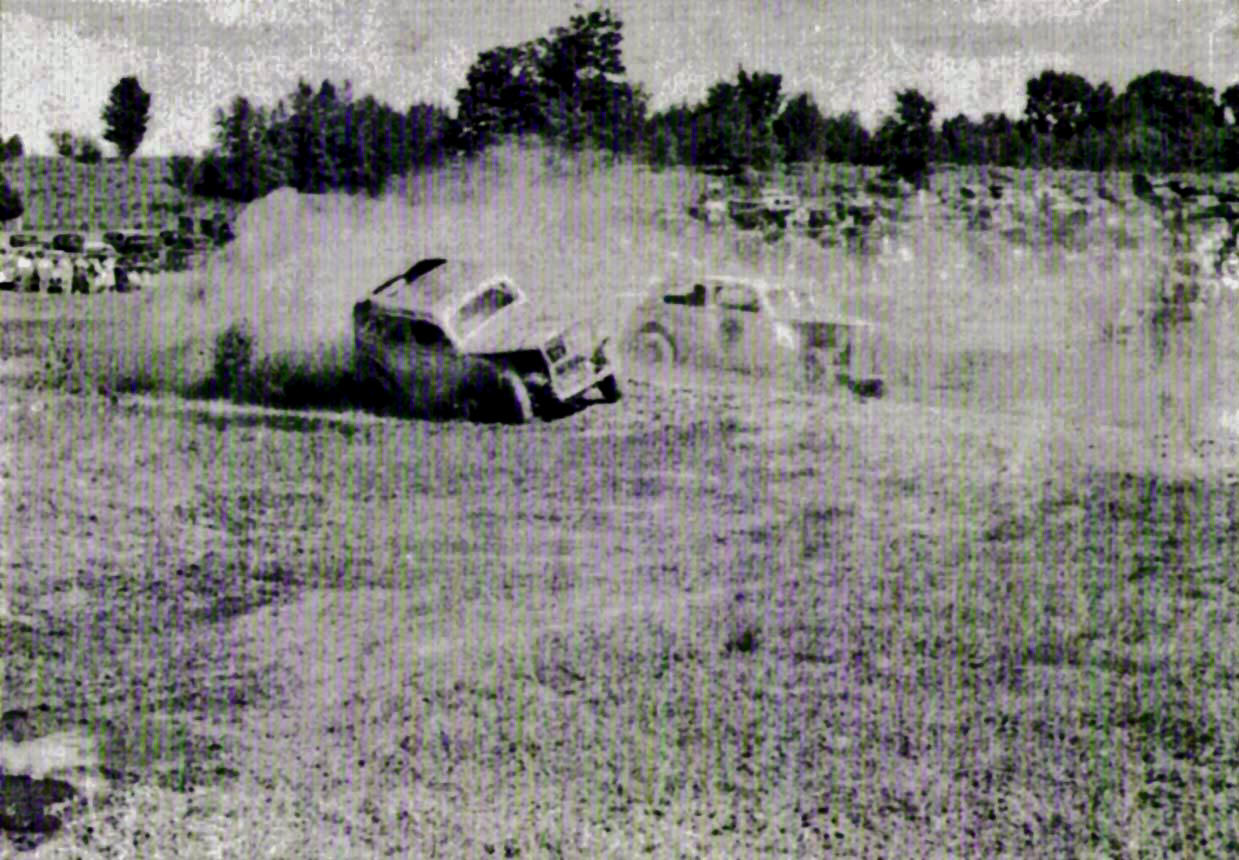 Courtesy of Bill Baker Another one ready to flip at Enosburgh Speedway. |